English and Canadian park roses
Among the variety of rose varieties, you cannot go past the park roses. Park roses are varieties bred from rose hips. The beauty of noble roses and the endurance of decorative rose hips came together and successfully competed with the tea rose in decorating large gardens and parks.On this page we have selected the most beautiful and popular varieties of park roses with descriptions and photos.
| Content:
|
—
Varieties of Canadian park roses
Hybrids of park roses of Canadian selection tolerate winter well, and the bushes last until late autumn, strewn with lush flowers. Canadian roses are hardy and graceful, unpretentious and disease-resistant - an excellent option for beginners and for gardeners who prefer easy plant care. With minimal care, plants will delight you with abundant annual flowering, even if planted in the shade.
Alexander MacKenzie
|
The park rose Alexander Mackenzie maintains the beauty of its foliage throughout the season and demonstrates abundant flowering, especially in the first wave. |
The variety is considered one of the most noble and elegant, delighting with its beauty, delicate fragrance and ability to withstand frost, heat, rain and drought.
- The bush is tall, up to 2 m. The shoots are erect below, drooping at the tops. Crown width – 1.5 m. In the southern regions, the crop can reach a height of 3 m. Large foliage is dark green with a glossy sheen.
- Flowering occurs in two waves, between which single flowers are formed on the bush. The flowering period begins in the first half of June and ends in mid-September.
- The flowers are double, classically shaped with bent petals, of which there are 40-50 per bud. The size of the flowers is 5-8 cm, they are collected in brushes of 5-15 pieces. The color of the petals is bright scarlet. The aroma is light, with strawberry notes.
- The variety is undemanding in terms of soil composition. Grows equally well in sun and shade.
- Resistance to diseases is high. Not attacked by pests.
- Winter hardiness zone: 3 (-35 ºС).Rose grows well not only in the south and central part of Russia, but also in the Moscow region, in the Leningrad region.
Champlain
|
Champlain is one of the best and most spectacular Canadian park rose varieties. |
The variety is characterized by continuous flowering, accompanied by a faint aroma. The flowers are suitable for cutting. A blooming Champlain gives the impression that there are many more flowers on the bush than foliage.
- The height of the bush is 0.9-1.3 m with a width of up to 1 m. The foliage is glossy, dark green, shoots with thorns. Growth rates are low.
- The Champlain variety is a repeat flowering variety. Flowering lasts all season.
- The size of the flowers is 5-7 cm; when fully bloomed, bright golden stamens can be observed. In cool weather, the buds do not fully open. The structure of the buds is semi-double, they are collected in clusters of 5 to 20 pieces. The petals are bright or wine red and there are 25-30 of them in total. The aroma is weak or absent altogether.
- Prefers loose, nutritious soil.
- Champlain roses can be affected by black spot and powdery mildew in unfavorable years.
- Winter hardiness zone: 2 (-40 °C). The variety is often found in gardens of the Moscow region, the North-Western region and Siberia.
William Baffin
|
Pictured is the Canadian park rose William Baffin |
The main advantage of this rose with bright pink flowers is that it has good immunity to most diseases. Unpretentious in care, universal in use.
- The plant is vigorous - up to 2 m in height. The crown spreads up to 1.8 m wide. Miniature bottle-colored leaves are covered with a waxy coating. There are no thorns on the shoots.
- William Baffin is a repeat flowering plant.The first wave of flowering begins in July, the second - in the last weeks of summer and lasts until the end of September. During the rainy season it remains decorative.
- The flowers are double, collected in brushes of 15-25 pieces. Each rose has a diameter of 6-7 cm and has 15-20 petals. The color of the petals is bright crimson with golden stamens and a light pink border. There is no aroma.
- Prefers fertile, loamy soil. Grows well in sunny areas.
- The variety successfully resists diseases thanks to preventive measures.
- Winter hardiness zone: 2 (-45 °C). Shoots quickly recover after freezing.
Henry Kelsey
|
Park rose Henry Kelsey. The variety is distinguished by good winter hardiness, disease resistance, and attractive red flowers. |
In landscape planning, the variety is used to create hedges and vertical gardening.
- The bush is spreading, 2.0-2.5 m high, 2.0 m in diameter. The shoots are long, arched, with thorns. The leaves are dark green.
- Flowering is abundant, in several waves until frost.
- The diameter of semi-double, bright red flowers with yellow-golden stamens is 8 cm. The buds are collected in clusters of 6-18 pieces. The flower shape is cup-shaped. The aroma is fruity and spicy.
- Rose Henry Kelsey loves well-consecrated places, loamy soil, and regular watering.
- The variety is resistant to diseases; in unfavorable climates it can be susceptible to black spot.
- Winter hardiness zone: 3 (-35 °C).
Henry Hudson
|
Rose Canadian park Henry Hudson. The variety has a dense crown and is very disease resistant. |
The peculiarity of the variety is its ease of propagation by cuttings.
- The height of the rose is just over half a meter, and in diameter - 0.6 - 1.2 m.The foliage is medium in size, dark green in color, and has a glossy surface. The crown is dense, the shoots have small thorns.
- Flowering is abundant and repeated. It begins in June and continues until September.
- Pink round buds turn into white flowers with a pink tint and yellow stamens. The diameter of flowers containing 17-25 petals is 7 cm. 3-5 roses are formed in one inflorescence brush. The aroma is strong and sweet.
- The soil should be fertile, loose and loamy with slight acidity.
- The variety is resistant to most diseases.
- Winter hardiness zone: 3 (-38 °C).
John Cabot
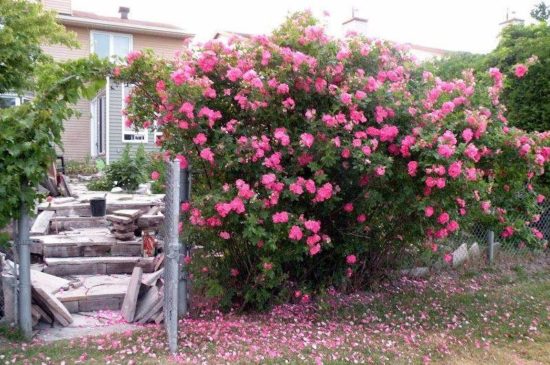
Pictured is John Cabot. Frost-resistant, fast-growing variety of Canadian park rose. |
Under favorable conditions, the variety can grow in one place for up to 15 years.
- The height of the rose is 2-2.5 m. The shoots have long and sharp thorns in an average number.
- Summer flowering lasts no more than two months, from June to July, and the next period occurs in autumn. In the interval between these periods, single roses may appear, which is why the shrub is always beautiful.
- The flowers are pale pink in color; they can be placed on one brush, 5 - 10 pieces. The shape is wide-cupped with a diameter of 6-7 cm. The flower is densely double, consists of 40 petals with wavy edges, with a dense structure. Yellow stamens sparkle in the center. The aroma is weak with light fruity notes.
- It is advisable to grow this variety in sunny areas with light shade. The soil needs to be loamy, slightly acidic.
- Winter hardiness zone: 2 (-45 °C). Moscow region, North-Western region, Siberia.
Lac Majeau
|
The variety resembles rosehip, especially in smell. At the last stage of flowering, the rose produces small red berries. |
The best feature of this variety is its high winter hardiness and disease resistance. Lac Mageau is cultivated without problems in central Russia and the Moscow region, and overwinters without shelter.
- The rose forms a large spreading bush about 1.5 - 2 m high. There are few thorns on the shoots. Leaves without shine, grayish-green tone. The foliage is medium green, matte, leathery.
- Continuous flowering continues from the end of June until September inclusive.
- The flowers are white with pink streaks, 5-6 cm in diameter, semi-double. When fully opened, the middle of the flower with yellow stamens is visible. The inflorescence forms from 3 to 5 buds. The aroma is moderate.
- It is advisable to grow in sunny areas with light shade. The soil needs to be loamy, slightly acidic.
- This variety has high disease resistance.
- Winter hardiness zone: 2 (-45 °C). Moscow region, North-Western region, Siberia. When the shoots freeze, they quickly recover in the spring.
Martin Frobisher
|
The park rose Martin Frobisher is not only super frost-resistant, but also tolerates hot climate conditions. |
Maintains freshness for a long time when cut. The variety is not whimsical and does not require care.
- The bush is erect, up to 2 m high, 1-1.6 m wide. There are very few thorns. The leaves are gray-green, medium-sized, glossy and dense.
- Continuous flowering continues from the end of June until September inclusive. Martin Frobisher does not tolerate prolonged rains well; some of the buds may not open at all. In hot weather, the petals may fall off quickly.
- The flowers are densely double, milky in color with a pink tint in the center, collected in brushes of 3-5 pieces. The diameter of the roses is 6 cm, each consists of 40 petals. The aroma is light.
- The flowering process lasts the entire season - the variety is continuously flowering. The first buds open at the end of May, and the last ones - before frost.
- It is advisable to grow in sunny areas with light shade. The soil needs to be loamy, slightly acidic.
- The rose is somewhat susceptible to black spot, but is otherwise disease resistant.
- Winter hardiness zone of the variety: 2 (–45°C). Moscow region, North-Western region, Siberia.
Lambert Closse
|
The Lambert Closse variety is characterized by beautiful and long flowering, high frost resistance, and good immunity to diseases. It undergoes transplantation easily and painlessly. |
- The rose bush is compact, lush, about 0.8 m high, 0.8 m wide. The shoots are straight, branched, and there are few thorns. The foliage is dense.
- The culture is re-flowering. Flowering occurs in waves, begins in June and lasts until frost. Lambert Kloss does not tolerate prolonged rains well; some of the buds may not open at all. In the sun, the petals are susceptible to fading.
- The flowers, 7-8 cm in diameter, are similar in shape to a hybrid tea rose. At the beginning of flowering, the petals are dark pink, but fade to pale pink over time. The buds have a dense structure, often solitary or form small inflorescences of 2-3 pieces. The aroma is weak.
- The soil should be fertile, loose and loamy with slight acidity.
- The variety is resistant to powdery mildew and moderately resistant to black spot.
- Winter hardiness zone: 4 (from -34 to -29°C). Central part of Russia, Moscow region, Leningrad region.
Varieties of English park roses
English park roses enchant us with their pleasant aroma, beautiful flowers and elegant appearance. They are a profusely flowering bush with large buds and continuous flowering.This variety of roses is undemanding in terms of care and soil quality. The plants are resistant to cold, unpretentious, and take root well in central Russia, in particular in the Moscow region. Most of them produce small edible fruits. Park roses are used both in single and group plantings to decorate hedges.
Cardinal Richelieu
|
In the photo there is a park rose Cardinal de Richelieu |
The English park rose Cardinal Richelieu will not go unnoticed, thanks to the rich purple color of its densely double flowers with a pale base and unique aroma. The beautiful shape and good winter hardiness attract attention.
- The bushes are neat, up to 1.5 m high and wide. The shoots are thin, drooping, almost without thorns. Growth is moderate. The foliage is small, dark green, glossy.
- The variety blooms once, abundantly, and lasts from the beginning of summer for two months. During the rainy season, the inflorescences absorb moisture and are susceptible to rotting. In the sun they fade.
- The flowers are densely double, 5-6 cm in diameter, collected in clusters of 3-5 pieces. The shape of the flowers is spherical. The buds of the Cardinal Richelieu variety are raspberry-purple in color, the flowers are purple and almost white on the reverse side. Consist of 50 petals. With age, the flower fades to a lilac-lilac color with an ashen tint. The aroma is subtle, peppery.
- The variety is undemanding to soil. Loves sunny areas without stagnant water.
- Rose Cardinal de Richelieu is little susceptible to diseases and damage by pests.
- Winter hardiness: the variety can grow in almost any region of our country.
Golden Celebration
|
The park rose Golden Celebration or Golden Holiday, as described, is distinguished by huge yellow-golden flowers and has a long flowering period until persistent cold weather. |
- The bush is spreading, 1.2-1.5 m high and wide. The shoots are flexible, drooping, slightly prickly. It grows very quickly. The leaves are bright green, glossy. It can grow both as a regular bush and on supports - the variety is often used in the design of fences, gazebos and arches.
- Abundant flowering begins in June and continues in rapidly recurring waves until the end of October. Flowers may not tolerate rain or extreme heat well.
- Densely double flowers, 16 cm in diameter, as in the photo, bright yellow with pink specks. Because of this they look golden-copper. Mature flowers acquire creamy tones. The petals are rounded, the outer ones bend slightly, creating a bowl effect. There are 3-5 flowers in one brush. The aroma is bright with a predominance of notes of fruit and spices.
- The variety has no complaints about the soil and lighting of the site.
- Rose Golden Celebration is rarely affected by powdery mildew, rust and rot. But it can be affected by black spotting.
- Winter hardiness zone: 2 (–45°C). Moscow region, North-Western region, Siberia.
Winchester Cathedral
|
One of the best English varieties of park roses. We love flower growers for their abundant lush flowering in summer and autumn, strong immunity and ease of care. |
Flowers and buds last a long time when cut. The variety is used in single, group and mixed plantings.
- Winchester Cathedral is a branched shrub up to 1.2 m high with dense matte dark green foliage. The shoots are straight and strong. There are few thorns.
- The repeat-blooming rose is characterized by abundant, intense and long-lasting flowering.Flowering continues all summer from the first half of June until autumn. It tolerates long-term cold weather, rain and heat well and withstands.
- The flowers are densely double, up to 9 cm in diameter, collected in brushes of 3-5 pieces. The shape is cupped, the outer petals bend during flowering. Color - white or pale cream with pink specks and streaks. The aroma is faint honey-almond.
- Rose prefers sunny areas with slightly acidic, well-fertilized soil.
- The plant is rarely affected by powdery mildew, rust and rot. But it can be affected by black spotting.
- Winter hardiness zone of the variety: 4 (from -34 to -29°C). Central part of Russia, Moscow region, Leningrad region.
Remi Martin
|
Pictured is the English park rose Remi Martin |
The English park rose Remy Martin is remembered for its high decorativeness. But there are a number of other positive qualities: good resistance to cold, drought resistance, good immunity to disease, abundant and lush flowering, rain resistance.
- The bushes are formed dense, well branched, up to 1.5 m in height and up to 1.2 m in width. The shoots are straight, without thorns. The leaves are medium-sized, dark green.
- Remy Martin is a repeat flowering plant. The first wave of flowering begins at the end of May and lasts about two months, the second begins almost immediately. Rain resistance is good. Petals do not fade in the sun.
- Buds can be formed one at a time or in small inflorescences consisting of 3-5 pieces. The flowers, 6-8 cm in diameter, are painted in a beautiful apricot color. The aroma is light, unobtrusive.
- The variety develops best in a sunny, dry, cool climate, in areas with slightly acidic, well-drained and nutritious soil.
- The variety is rarely affected by powdery mildew, rust and black spot.
- Winter hardiness zone: 4 (from -34 to -29°C). Central part of Russia, Moscow region, Leningrad region.
Scepterd Isle
|
Rose Scepterd Isle is a compact bush characterized by abundant, long-lasting flowering. |
- Plant height – 1.2 m. Diameter – 0.9 m. The foliage is shiny, dark green, large, like that of hybrid tea roses.
- Flowering occurs throughout the summer. Rain resistance is good.
- The flowers are double, about 10 cm in diameter, with a strong aroma. Collected in brushes of 3-10 pieces. Cup-shaped. The color of the flowers is pink, on the lower petals it turns into pale pink, the center is decorated with golden-yellow stamens. Number of petals – 45 pcs.
- The culture prefers sunny or shaded areas with neutral soil.
- Strong immunity to powdery mildew and black spot is a big plus of this variety.
- Winter hardiness zone of the variety: 4 (from -34 to -29°C). Central part of Russia, Moscow region, Leningrad region.
Abraham Darby
|
Pictured is Abraham Darby |
One of the most beautiful and fragrant English roses. Lush park shrub, blooming with short breaks all summer and part of autumn. Abraham Derby is suitable for cutting. This rose is especially decorative when planted alone.
- The shrub is round in shape, 1.5 m high and wide. The growth rate is high. The shoots bend under the weight of the flowers. The leaves are medium-sized, glossy, bright green, dense, leathery.
- Flowering begins in May–June and lasts until September. During prolonged rains, the petals often stick together, when they bloom, they do not fall off for a long time, sometimes they turn brown and dry out right on the bush. In this case, it is necessary to prune the faded flowers.
- Flowers, 12-14 cm in diameter, have a beautiful apricot color. The shape of the buds is spherical. Each flower differs in color depending on the climatic conditions at the time of its blooming. The buds are formed singly or collected in clusters of 2-3 pieces. The aroma is strong, fruity with notes of rose oil and citrus.
- The culture prefers sunny or shaded areas with neutral soil.
- The variety is rarely affected by powdery mildew, rust and black spot.
- Winter hardiness zone: 4 (from -34 to -29°C). Central part of Russia, Moscow region, Leningrad region.
Other articles about rose varieties:
- Description of the best varieties of floribunda roses with photos and names ⇒
- Ground cover roses: the best varieties with photos and names ⇒
- Varieties of peony roses with descriptions and photos ⇒
- Miniature (border) roses: the most beautiful varieties with photos and names ⇒
- Varieties of roses with green flowers ⇒
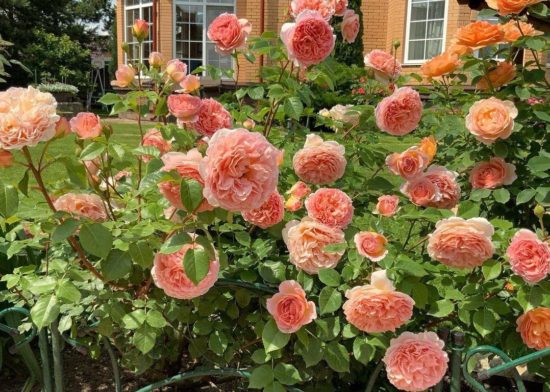
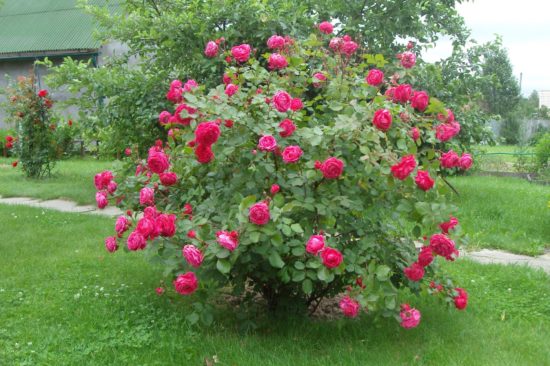
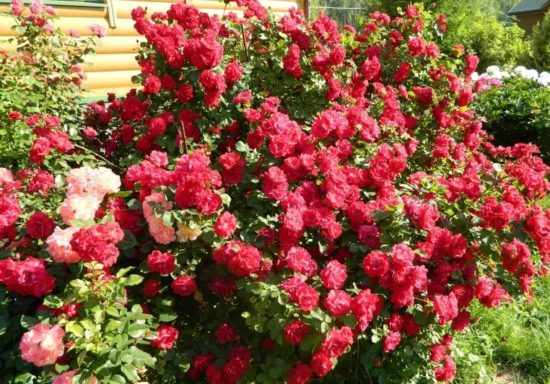
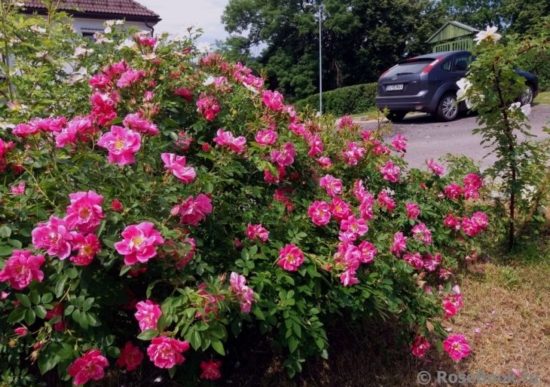
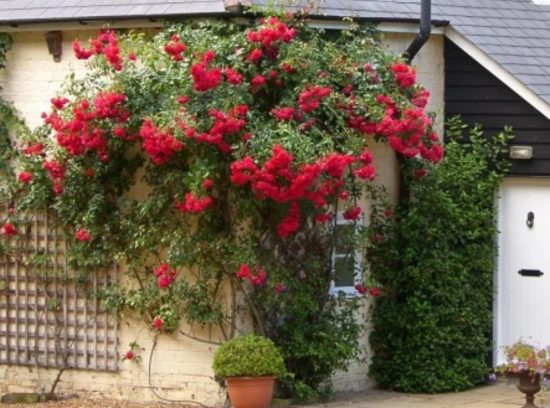
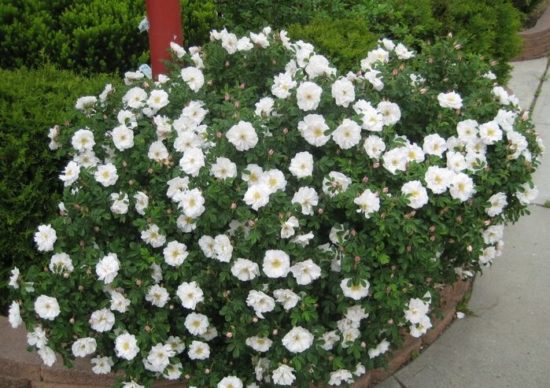
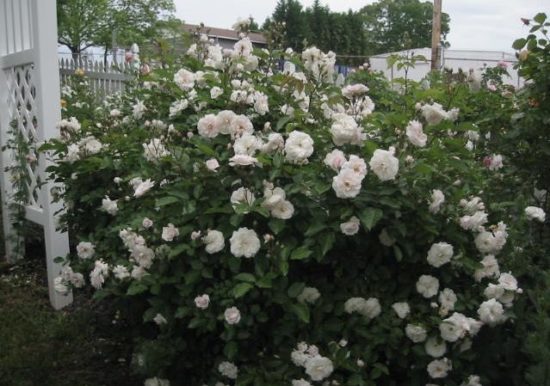
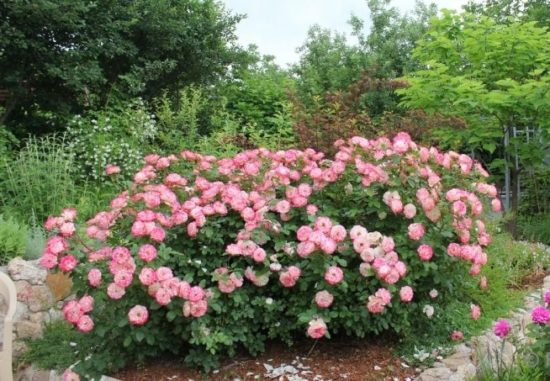
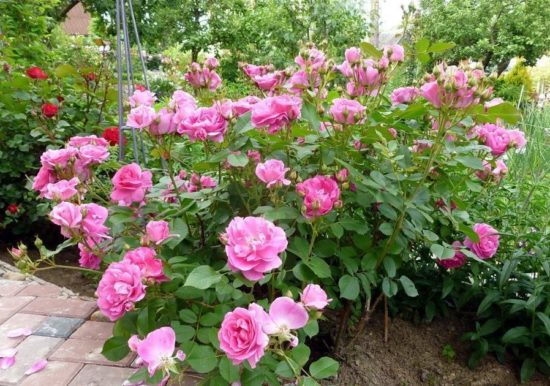
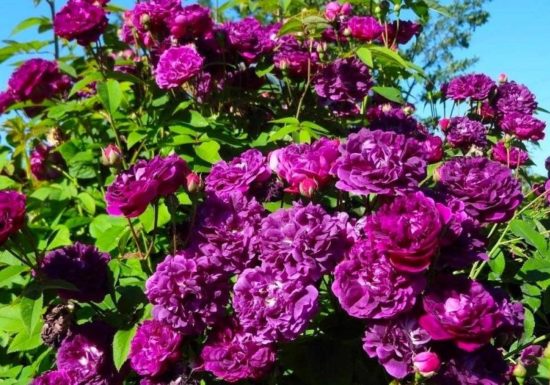
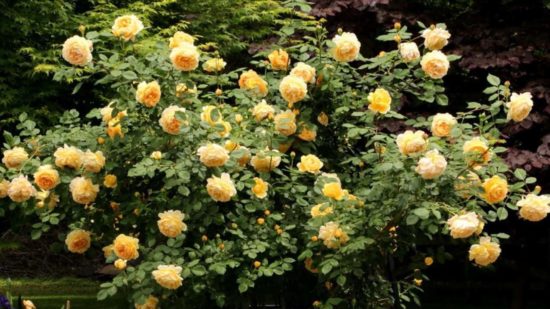


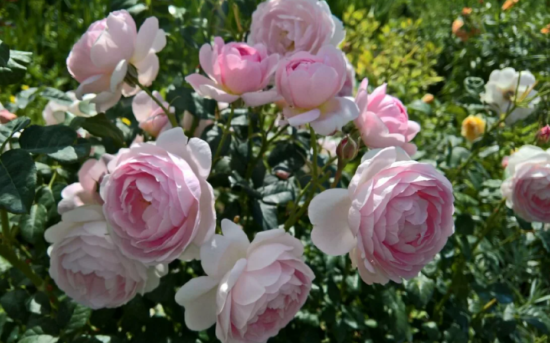

 (2 ratings, average: 4,00 out of 5)
(2 ratings, average: 4,00 out of 5) CUCUMBERS NEVER GET SICK, I'VE BEEN USING ONLY THIS FOR 40 YEARS! I SHARE A SECRET WITH YOU, CUCUMBERS ARE LIKE THE PICTURE!
CUCUMBERS NEVER GET SICK, I'VE BEEN USING ONLY THIS FOR 40 YEARS! I SHARE A SECRET WITH YOU, CUCUMBERS ARE LIKE THE PICTURE! You can dig a bucket of potatoes from each bush. Do you think these are fairy tales? Watch the video
You can dig a bucket of potatoes from each bush. Do you think these are fairy tales? Watch the video
 How our fellow gardeners work in Korea. There is a lot to learn and just fun to watch.
How our fellow gardeners work in Korea. There is a lot to learn and just fun to watch. Eye trainer. The author claims that with daily viewing, vision is restored. They don't charge money for views.
Eye trainer. The author claims that with daily viewing, vision is restored. They don't charge money for views. A 3-ingredient cake recipe in 30 minutes is better than Napoleon. Simple and very tasty.
A 3-ingredient cake recipe in 30 minutes is better than Napoleon. Simple and very tasty. Therapeutic exercises for cervical osteochondrosis. A complete set of exercises.
Therapeutic exercises for cervical osteochondrosis. A complete set of exercises. Which indoor plants match your zodiac sign?
Which indoor plants match your zodiac sign? What about them? Excursion to German dachas.
What about them? Excursion to German dachas.